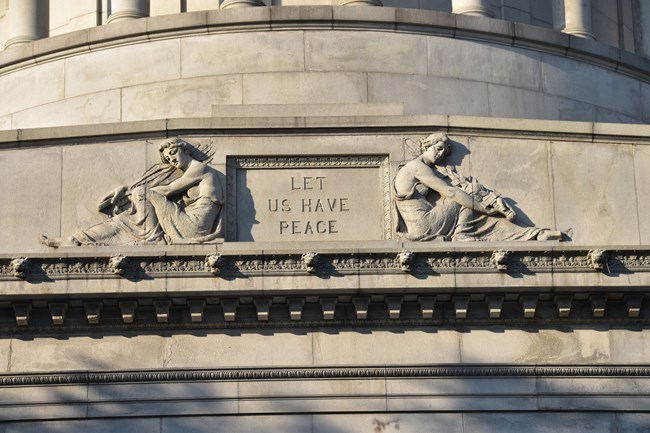Last updated: July 22, 2021
Article
Outdoor Architecture at Grant's Tomb

accurately summed up the nation's mood after the Civil War and is featured on the mausoleum as an epitaph, defined as a phrase or form of words written in memory of a person who has died, especially as an inscription on a tombstone.
Artist J. Massey Rhind created the two figures featured to the left and right of the epitaph, and the figures are most likely intended to symbolize Victory and Peace. The figure on the left holds a sheath of palm leaves – a symbol of victory and the figure on the right holds a sword wrapped in olive leaves.


